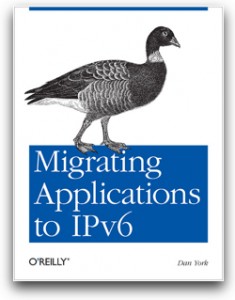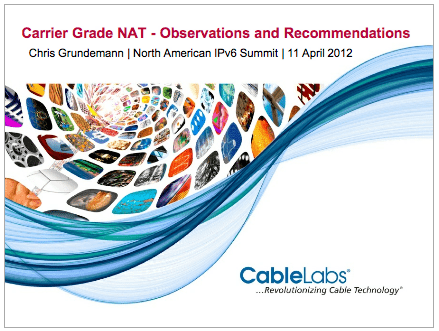Just a guy in Vermont trying to connect all the dots...
Author's posts
May 03
EFF’s Coders’ Rights Video: Do It For The Kittens!
Sooooo… the Electronic Frontier Foundation (EFF), of which I am a member, sends out a promotional video for their Coders’ Rights Project that involves… kittens???
While I support the Coders’ Rights Project and applaud their creativity, this video feels a bit forced… kind of like “everyone loves kitten videos, so we just need a kitten video!”
What do you think?
May 03
ICANN Seeking Participants and Speakers for DNSSEC Workshop June 27 in Prague
 Our friends over at the DNSSEC Deployment Initiative have noted that ICANN issued a Call for Participation for their upcoming DNSSEC Workshop on June 27, 2012, in Prague, Czech Republic, as part of the ICANN 44 meetings happening there. This is a similar workshop to the excellent DNSSEC workshop at ICANN 43 that I attended and spoke at in March in Costa Rica.
Our friends over at the DNSSEC Deployment Initiative have noted that ICANN issued a Call for Participation for their upcoming DNSSEC Workshop on June 27, 2012, in Prague, Czech Republic, as part of the ICANN 44 meetings happening there. This is a similar workshop to the excellent DNSSEC workshop at ICANN 43 that I attended and spoke at in March in Costa Rica.
While I can’t attend this meeting personally, I highly recommend attending if you are interested in deploying DNSSEC.
The folks at ICANN are seeking presentations on the following topics:
1. DNSSEC activities in Europe
2. ISPs and Validation
3. The realities of running DNSSEC
4. DNSSEC and Enterprise Activities
5. When unexpected DNSSEC events occur
6. DNSSEC in the wild
7. DANE and other DNSSEC applications
They are also seeking participants for something called “The Great DNSSEC Panel Quiz” that sounds like it could be entertaining!
More information and submission guidelines can be found in the Call for Participation. The deadline is May 10th to submit a speaking proposal, so time is short!
May 03
Updates Submitted For “Migrating Applications To IPv6” Book
 Very early this morning, I submitted a range of updates to the book to O’Reilly’s production team. As this is the first formal update I’ve made, I’m not sure of the exact process from here, but at some point soon the updated content will be available as part of the normal book. I’ll post about it here on the site when it’s ready, and anyone who bought the ebook directly from O’Reilly will be automagically notified about how to download the updates.
Very early this morning, I submitted a range of updates to the book to O’Reilly’s production team. As this is the first formal update I’ve made, I’m not sure of the exact process from here, but at some point soon the updated content will be available as part of the normal book. I’ll post about it here on the site when it’s ready, and anyone who bought the ebook directly from O’Reilly will be automagically notified about how to download the updates.
Here’s a snapshot of the changes I made to the book:
- Added new section on recent events and changes that make it critical for application developers to be thinking about IPv6.
- Added section on connecting to DNS servers over IPv6 and about DNS and DHCPv6
- Added sidebar about RFC 5952, “A Recommendation for IPv6 Address Text Representation”
- Expanded text about “Happy Eyeballs” algorithm and included mention of RFC 6556 for testing for happy eyeballs.
- Added brief info about lessons learned from World IPv6 Day
- Added info about World IPv6 Launch in 2012
- Added new section on testing resources
- Added new section about setting up an IPv6 test network
- Updated IPv6 NAT info to point to RFC 6296
- Added warning about SMTP’s way of showing IPv6 addresses
- Added additional resources, including a new section about some informational RFCs that may be of interest to application developers.
I’m pleased with how it came out… there’s been a great amount of new information added in the last few months that will be helpful for application developers and it was great to incorporate that into the book.
Next up, I’d like to add some images that illustrate some of the points in the book… but that’s the next update…
… and please do let me know if you have suggestions for additions you’d like to see in the book, either as a comment here or via email.
May 02
Cisco Blog: 5 Steps For Building Your IPv6 Address Plan
 Today over on Cisco’s “Borderless Networks” blog, Jim Bailey had a great post up tackling the issue around how you create a plan for your IPv6 address space: “Integrating IPv6 Into Your Network: Five Steps for Building Your IPv6 Address Plan“.
Today over on Cisco’s “Borderless Networks” blog, Jim Bailey had a great post up tackling the issue around how you create a plan for your IPv6 address space: “Integrating IPv6 Into Your Network: Five Steps for Building Your IPv6 Address Plan“.
Guidance on planning your IPv6 addressing is definitely a topic I have in our queue to add to our list of IPv6 resources, and Jim’s post hits the main points in my mind. The primary point, to me, is:
Do NOT be shackled by legacy IPv4 thinking!
Just because IP address allocation “was always done this way” in IPv4 doesn’t mean that you have to carry those same allocation processes across into IPv6. You have a chance to think about it a bit differently.
He also makes the point that you need to think about how you assign IPv6 addresses. Are you going to use stateless address autoconfiguration (SLAAC)? or DHCPv6? (or a combination thereof)
The post is a good read and the topic is worth thinking about as you plan your IPv6 networks.
P.S. And with World IPv6 Launch coming up in just over a month, are you getting your IPv6 network ready?
Apr 30
Slides: Carrier Grade NAT (CGN) Observations and Recommendations
What is Carrier Grade NAT (CGN) all about?[1] What are the problems associated with using it? What role, if any, should it play in networks during the transition from IPv4 to IPv6?
At the recent North American IPv6 Summit, Chris Grundemann of Cable Labs addressed exactly these points – and now has published a blog post with his CGN slides and some additional commentary:
It’s a good set of slides looking at a challenging issue. For some ISPs who are lagging behind with moving to IPv6, CGN looks like an attractive option to bypass IPv6 and just stay with IPv4. But as Chris notes, their testing found that a good number of popular services, including VoIP and online gaming, would break or at least have degraded performance in typical CGN deployments.
Chris also notes that he is available to speak with anyone interested in learning more about CGN. Thanks to Chris for making these slides available for us all to see.
[1] CGN is also sometimes referred to as “Large Scale NAT” or “LSN”.
Apr 27
Friday Video – IPv6: The Internet for Generations to Come
Yes, “IPv6: The Internet for Generations to Come,” is a slickly produced Cisco marketing video… but hey, it’s well-done and talks about World IPv6 Launch on June 6, 2012! We need more videos out there with messages like this one…
…and I mean, really, you have to love the passion of Cisco Fellow Mark Townsley in this video!
P.S. Got a suggestion for another video we should feature on a Friday afternoon? Please let us know. We’re still looking for that “IPv6 and kittens” video that we’d like to help go viral! ![]()
Apr 27
DNSsexy.net – News from the DNS blogosphere
Looking for news about DNS and DNSSEC that is happening around the Internet? If so, check out:
DNSsexy is a news aggregation site built and maintained by Jan-Piet Mens that pulls together DNS-related items from a variety of blogs and news sources. Do note that this is DNS in general… so it covers a wide range of DNS topics, not just the DNSSEC we cover here.
You can view the latest news by going to the site – or by adding the aggregated RSS feed into Google Reader or whatever feed reader you use.
I’ve found it quite a useful way to stay up on the many DNS posts happening around the Internet. Thanks to Jan-Piet Mens for setting up and maintaining the site!
Apr 27
Today’s VUC Call All About The "FreeSWITCH Cookbook" – Noon US Eastern
Today at noon US Eastern on the VoIP Users Conference (VUC) Call for Friday, April 27th, the group will discuss the brand new "FreeSWITCH Cookbook"[1] published by PACKT Publishing. The four authors of the book, who are also leaders of the FreeSWITCH project, will apparently be joining the call.
While Asterisk generally gets most of the "open source VoIP" buzz, the folks at the FreeSWITCH project have been working away on their own solution. As they will say, FreeSWITCH performs a different role than Asterisk and is used in different contexts.
FreeSWITCH has become quite a powerful platform and I'm looking forward to learning more about what is going on with the project right now.
You can join the live call via SIP, Skype or the regular old PSTN. There is also an IRC backchannel that gets heavy usage during the call. It will be recorded so you can always listen later.
As noted on the VUC page for today's call, the show will also be simulcast in video using Google+ video and YouTube. If you are interested in joining the video side of the call, please follow the instructions on the page.
[1] In full disclosure, this is an affiliate link with Amazon and if you actually purchase the book I receive a tiny amount of money. If you think this influences what I write here, you clearly haven't been reading my site. :-)
If you found this post interesting or useful, please consider either:
- following me on Twitter;
- adding me to a circle on Google+;
- subscribing to my email newsletter; or
- subscribing to the RSS feed
Apr 26
Comcast Formally Launches IPv6 Home Networking Pilot
 This is huge! In a pair of blog posts today Comcast formally launched its IPv6 “Home Networking Pilot”:
This is huge! In a pair of blog posts today Comcast formally launched its IPv6 “Home Networking Pilot”:
- IPv6 Home Networking Pilot Market Launch Begins, by Jason Livingood
- IPv6 Home Networking Pilot Market Deployment Technical Details, by John Jason Brzozowski
As I explained in an earlier post about this impending launch, support for home networks is a critical step for getting IPv6 more widely deployed, particularly as we collectively prepare for World IPv6 Launch on June 6, 2012. As Jason Livingood explains in his post (my emphasis added in bold):
Just as with our standalone computer support for IPv6, customer home networking is also native dual stack. This means that eligible customers will be provisioned with IPv6 addresses in addition to their IPv4 address. We maintain our commitment to the goal of a seamless transition to IPv6 and strongly believe that native dual stack is the best approach for our customers. We also believe that this strategy will over time will meaningfully differentiate our service from our competitors in a way that customers will greatly appreciate. Our native dual stack Xfinity Internet service will provide customers with direct IPv4 and IPv6 access, without the need to use a tunnel, proxy, network address translator, or other inefficient, outdated, and error-prone middlebox. That means customer Internet access will continue to be direct and fast. And because middlebox solutions are not used, customers avoid the risk that certain applications slow down, fail to work, or experience other annoying errors. Since two of the main reasons customers buy our Xfinity Internet service is reliability and the speed — and this approach ensures that we maintain both while other ISPs may face challenges doing so over time — we think our strategic approach to IPv6 will be a winner in the marketplace in the coming years.
John Jason Brzozowski hits a similar note in his post:
Native dual stack support remains central to Comcast deployment of IPv6, which means that customers who are enabled with IPv6 for home networking will be provisioned with IPv6 in addition to IPv4. This approach allows us to avoid the near term use of other types of transition technologies like tunnel and large scale Network Address Translation (NAT). Our experience and industry best practices continue to suggest that native dual stack offers the best path to a seamless IPv6 transition and an optimal customer experience, which is paramount to Comcast.
John Jason also makes a key point that not all home routers currently fully support IPv6 and directs customers to Comcast’s MyDeviceInfo site for the current list of devices Comcast has tested with IPv6.
As Jason Livingood explains, this initial launch will occur in a few of Comcast’s pilot markets but then will be expanded as rapidly as possible to other Comcast subscribers.
For us as an industry this is outstanding news… and many congratulations to Jason, John Jason and their teams!
Now lets see the rest of the ISPs out there join Comcast in providing this level of IPv6 support!
Apr 26
FreeBSD IPv6 Performance Analysis Project Brings Parity With IPv4
 The FreeBSD Foundation posted this week about the completion of a “IPv6 Performance Analysis Project” that had as its main goal closing the gap between IPv4 and IPv6 in terms of performance.
The FreeBSD Foundation posted this week about the completion of a “IPv6 Performance Analysis Project” that had as its main goal closing the gap between IPv4 and IPv6 in terms of performance.
Bjoern Zeeb was awarded a grant to perform this work earlier this year and has maintained a “Benchmarking and results” page showing his work and progress. As noted in the article:
With IPv6, TCP performance is now basically on par with IPv4 in the offloading case, allowing 10 Gbps line speed connections. This is a huge step forward. UDP throughput has increased and is closer to the level of IPv4. Changes to locking allowing better parallelism, which is a step in the right direction.
In the FreeBSD Foundation report, Zeeb is quoted as saying “This will help to keep the resource usage at the same level as traffic patterns shift towards IPv6.” This is indeed a concern. As more traffic shifts to IPv6, particularly with the impending World IPv6 Launch on June 6, 2012, network administrators will want to see the same level of performance in their servers on IPv6 as there is in IPv4.
Kudos to the FreeBSD team for recognizing this issue and undertaking the work – and congrats to Bjoern Zeeb and any others involved on bringing about performance parity in FreeBSD between IPv6 and IPv4. Great news to hear!



